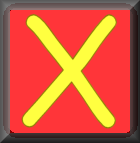
 |
Plinko ProbabilityA simulation of a Quincunx (Galton Board) which can be used to create the bell shaped curve of the normal distribution. |
Attribution PhET Interactive Simulations, University of Colorado Boulder, https://phet.colorado.edu.
The Quincunx, commonly known as the Galton Board, is a statistical device invented by Sir Francis Galton in the 19th century to demonstrate the central limit theorem and the normal distribution. It consists of an upright board with a series of pegs arranged in a triangular pattern. Small balls are dropped from the top of the board, and as they descend, they bounce off the pegs in a random fashion, either to the left or right. At the bottom of the board are a series of bins where the balls collect. Over time, as many balls are dropped, they tend to form a distribution in the bins that resembles a bell curve or normal distribution. The Galton Board visually illustrates the concept of randomness and how individual random events can collectively produce a predictable pattern. It has been used extensively in educational settings to teach principles of probability and statistics.
|
|
||
Transum.orgThis web site contains over a thousand free mathematical activities for teachers and pupils. Click here to go to the main page which links to all of the resources available. Please contact me if you have any suggestions or questions.
|
More Activities: |
|
|
Mathematicians are not the people who find Maths easy; they are the people who enjoy how mystifying, puzzling and hard it is. Are you a mathematician? Comment recorded on the 1 August 'Starter of the Day' page by Peter Wright, St Joseph's College: "Love using the Starter of the Day activities to get the students into Maths mode at the beginning of a lesson. Lots of interesting discussions and questions have arisen out of the activities. Comment recorded on the 3 October 'Starter of the Day' page by Fiona Bray, Cams Hill School: "This is an excellent website. We all often use the starters as the pupils come in the door and get settled as we take the register." |
Each month a newsletter is published containing details of the new additions to the Transum website and a new puzzle of the month. The newsletter is then duplicated as a podcast which is available on the major delivery networks. You can listen to the podcast while you are commuting, exercising or relaxing. Transum breaking news is available on Twitter @Transum and if that's not enough there is also a Transum Facebook page. |
|
Numeracy"Numeracy is a proficiency which is developed mainly in Mathematics but also in other subjects. It is more than an ability to do basic arithmetic. It involves developing confidence and competence with numbers and measures. It requires understanding of the number system, a repertoire of mathematical techniques, and an inclination and ability to solve quantitative or spatial problems in a range of contexts. Numeracy also demands understanding of the ways in which data are gathered by counting and measuring, and presented in graphs, diagrams, charts and tables." Secondary National Strategy, Mathematics at key stage 3 |
||
Go MathsLearning and understanding Mathematics, at every level, requires learner engagement. Mathematics is not a spectator sport. Sometimes traditional teaching fails to actively involve students. One way to address the problem is through the use of interactive activities and this web site provides many of those. The Go Maths main page links to more activities designed for students in upper Secondary/High school. | ||
Teachers | ||
|
If you found this activity useful don't forget to record it in your scheme of work or learning management system. The short URL, ready to be copied and pasted, is as follows: |
Alternatively, if you use Google Classroom, all you have to do is click on the green icon below in order to add this activity to one of your classes. |
It may be worth remembering that if Transum.org should go offline for whatever reason, there are mirror site at Transum.info that contains most of the resources that are available here on Transum.org. When planning to use technology in your lesson always have a plan B! |
|
Do you have any comments? It is always useful to receive feedback and helps make this free resource even more useful for those learning Mathematics anywhere in the world. Click here to enter your comments. |
||
© Transum Mathematics 1997-2025
Scan the QR code below to visit the online version of this activity.
https://www.Transum.org/go/?Num=659
This activity was created and is distributed by PhET. Founded in 2002 by Nobel Laureate Carl Wieman, the PhET Interactive Simulations project at the University of Colorado Boulder creates free interactive math and science simulations. PhET sims are based on extensive education research and engage students through an intuitive, game-like environment where students learn through exploration and discovery.
PhET licenses this sctivity under a Creative Commons Attribution 4.0 License ("CC BY 4.0"). The full text of the Creative Commons Attribution 4.0 license is available here: http://creativecommons.org/licenses/by/4.0/legalcode.
PhET Regular HTML Simulation Files may be freely used and/or redistributed by third parties (e.g. students, educators, school districts, museums, publishers, vendors, etc.) for non-commercial or commercial purposes.
Close
